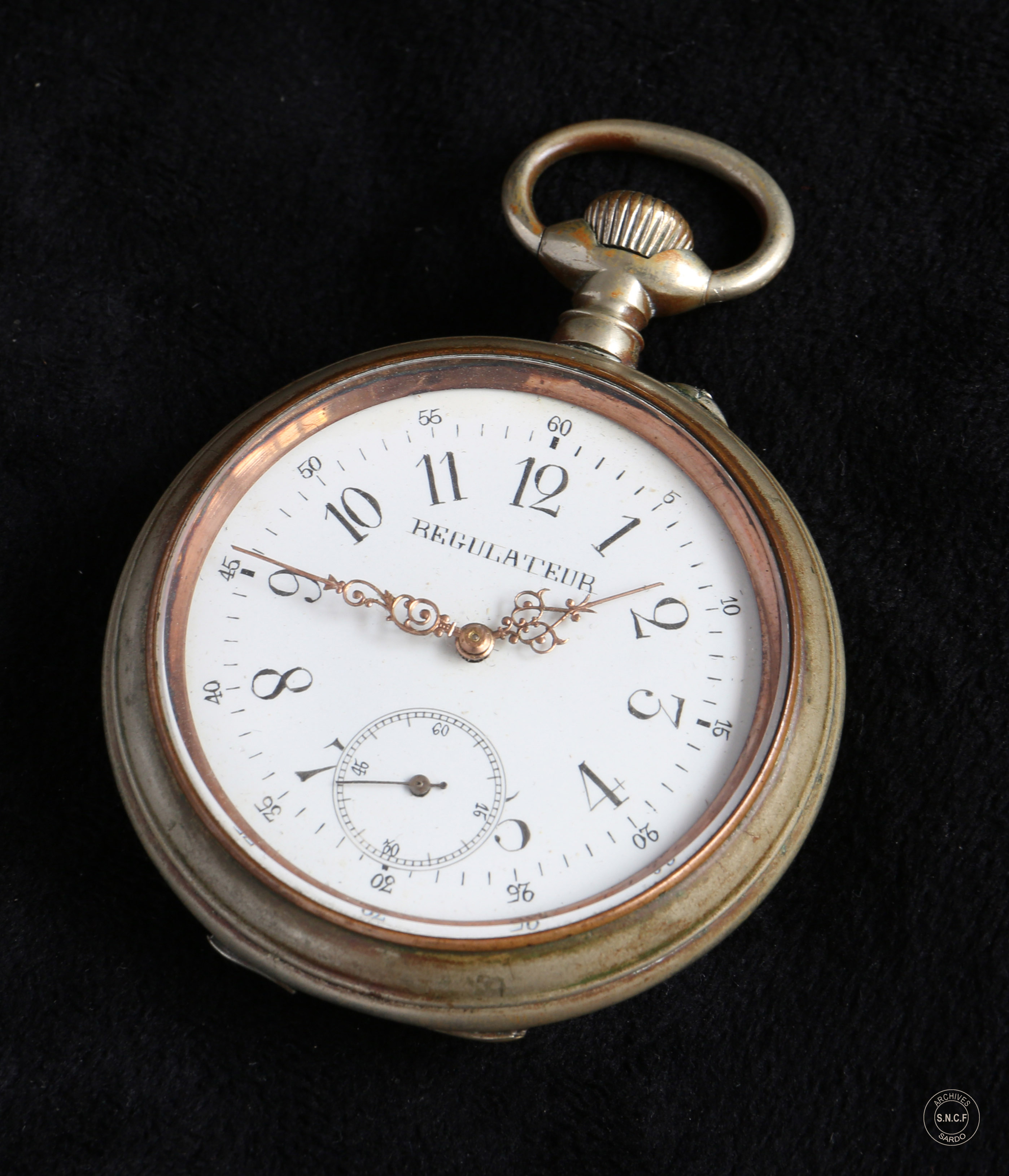
Montre_Régulateur_3_3

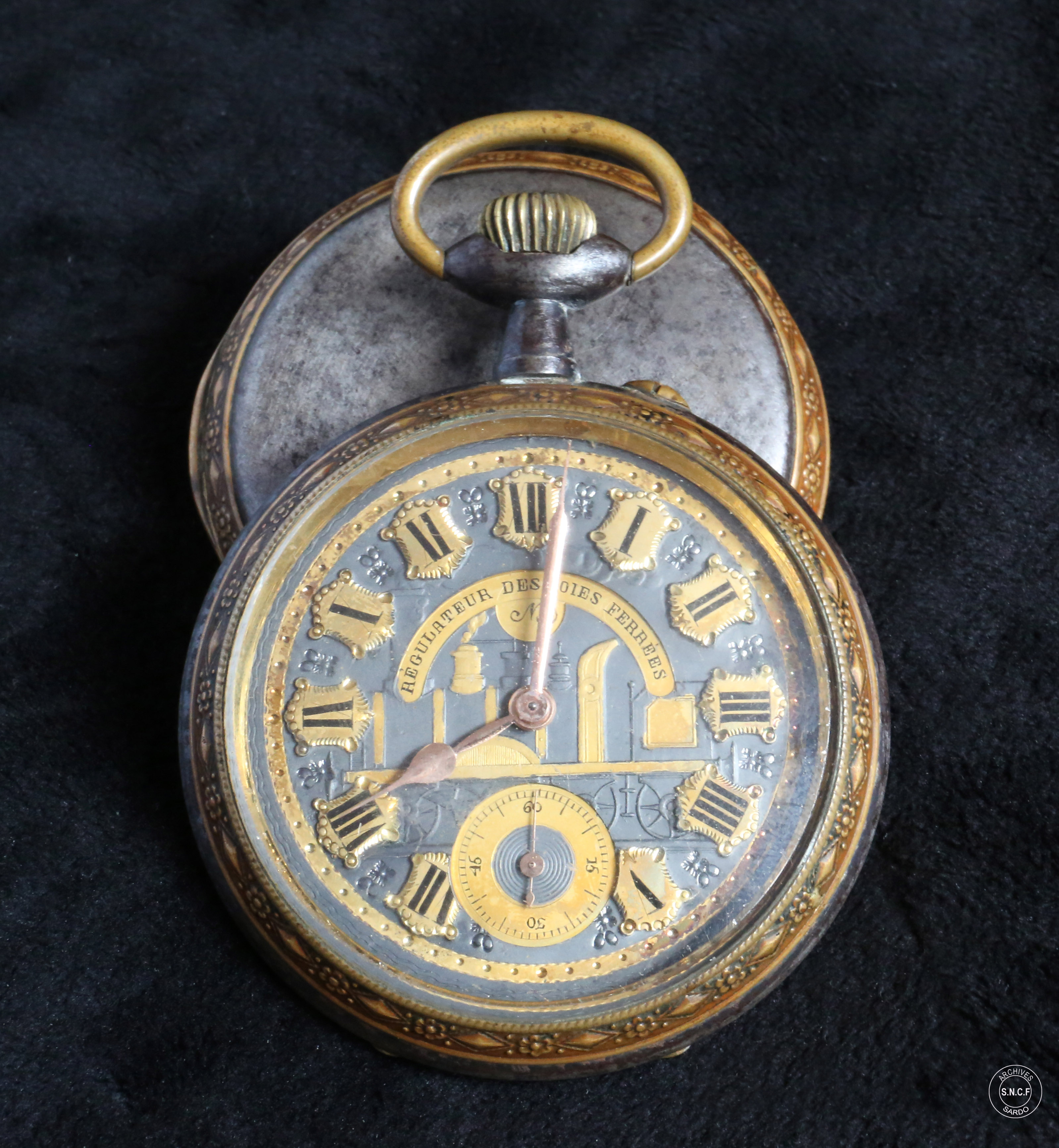
Collection SARDO - Centre national des archives historiques
Travelling by train is also travelling through time. But how do you measure this time?
First introduced in Europe at the end of the 17th century, the regulator quickly became the solution for measuring time linearly and accurately. Until then, clocks display a time that is approximate, that varies by several minutes each day, and that must be constantly adjusted. This approximation, which suited everyday human activities, became increasingly problematic as science and technology penetrated societies.
The regulator was originally the measuring mechanism at the heart ofmodern watchmaking. Its image is obviously familiar: that of a dial with separate hours and minutes. Synonymous with precision to the nearest second, the regulator is the key element in modern timekeeping. Regulator watches are an integral part of the history – and now heritage – of SNCF.
The regulator is the cornerstone of mechanical watchmaking.
The regulator concentrates in one small mechanism centuries of sky observation by astronomers, who sought to measure and preserve the movements of the stars, particularly the moon and the sun. It bears witness to the new world that was beginning to take shape at the dawn of the 17th century, when maritime navigation became a key issue for the great powers, and required cutting-edge chronometry. Time became increasingly important, especially with the arrival of the railroads. Regulator watches became the time reference for railway employees.

Montre_Régulateur_3_3

Montre_Régulateur_2_2
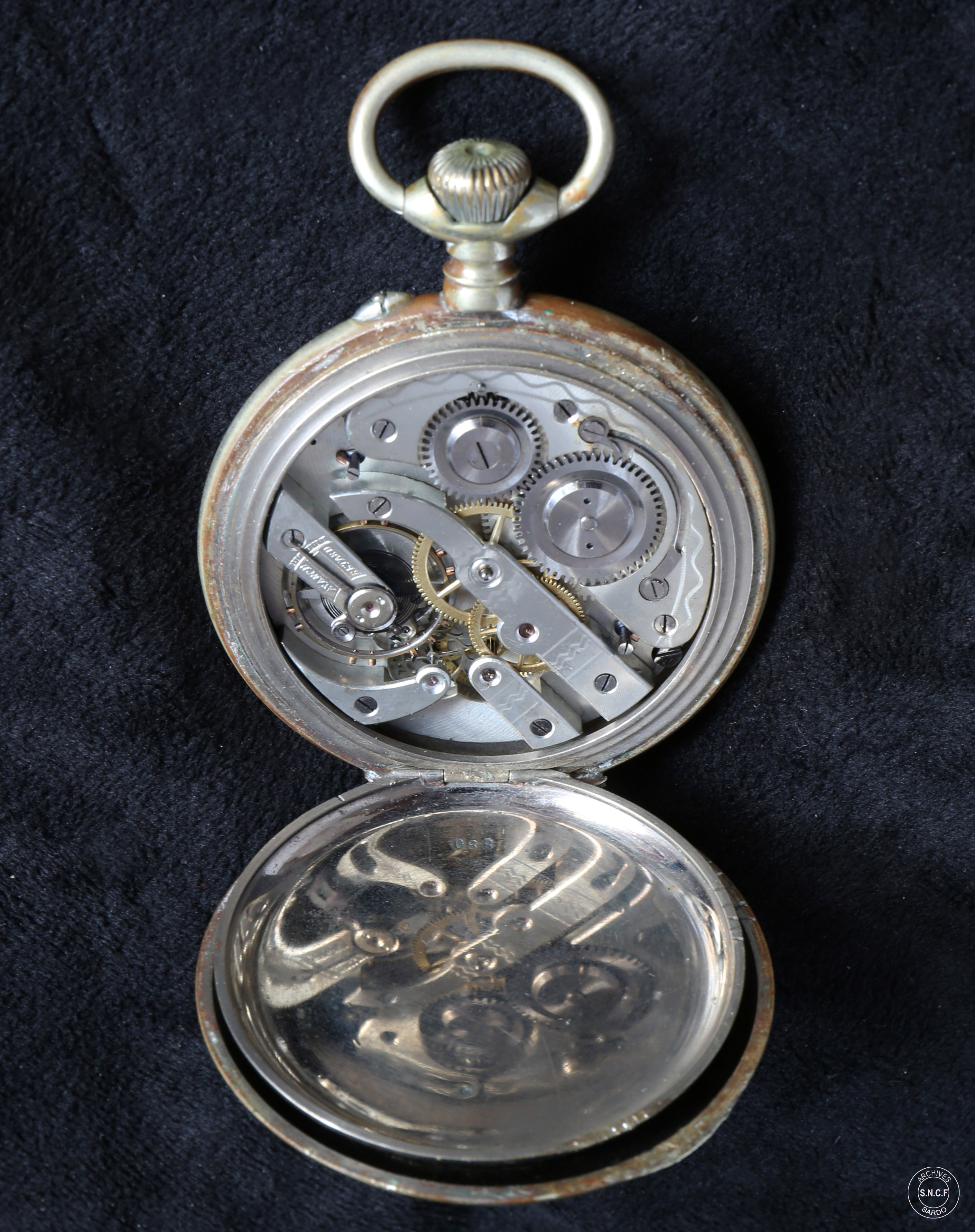
Montre_Régulateur_3_2
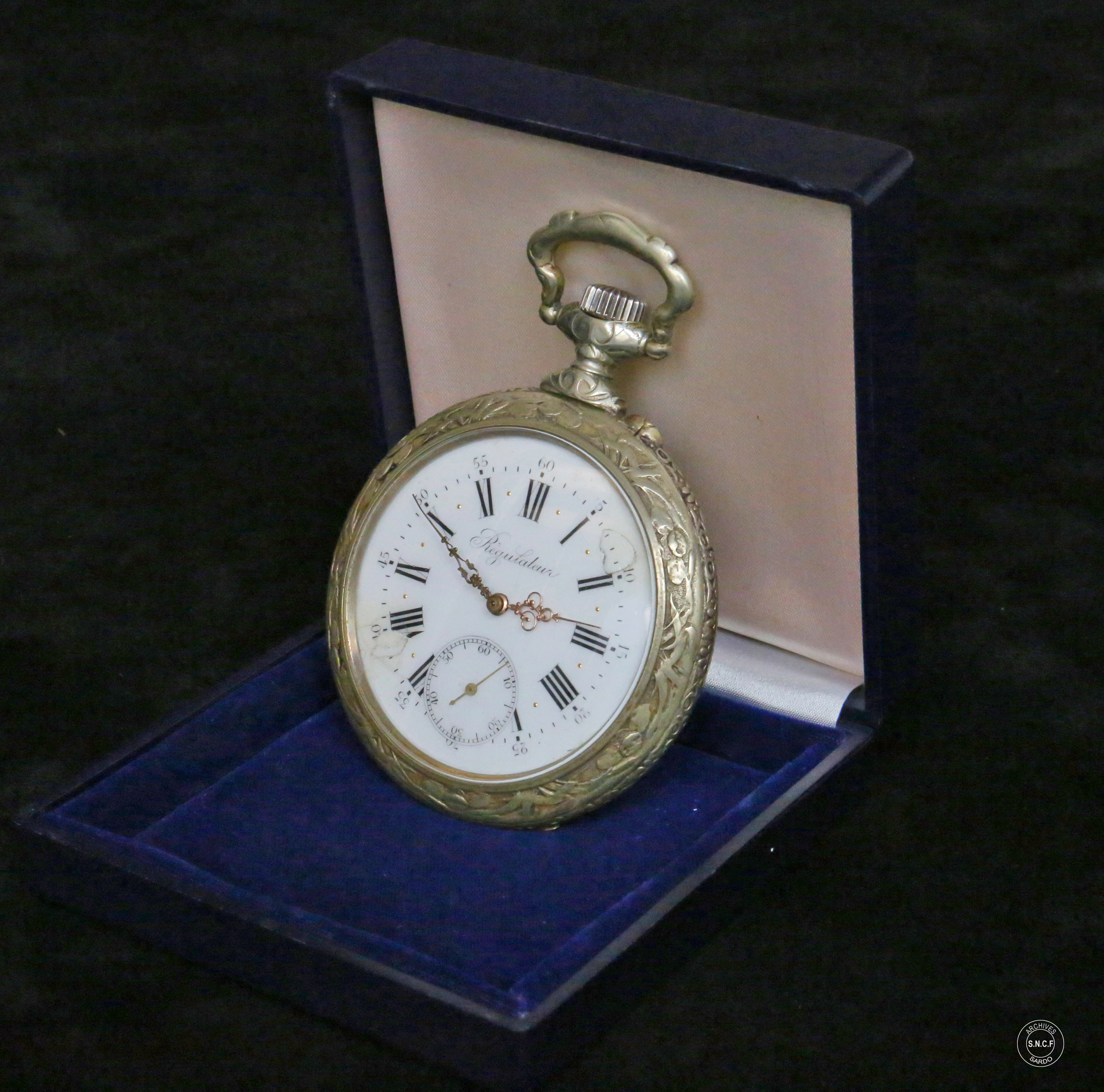
Montre_Régulateur_1_1
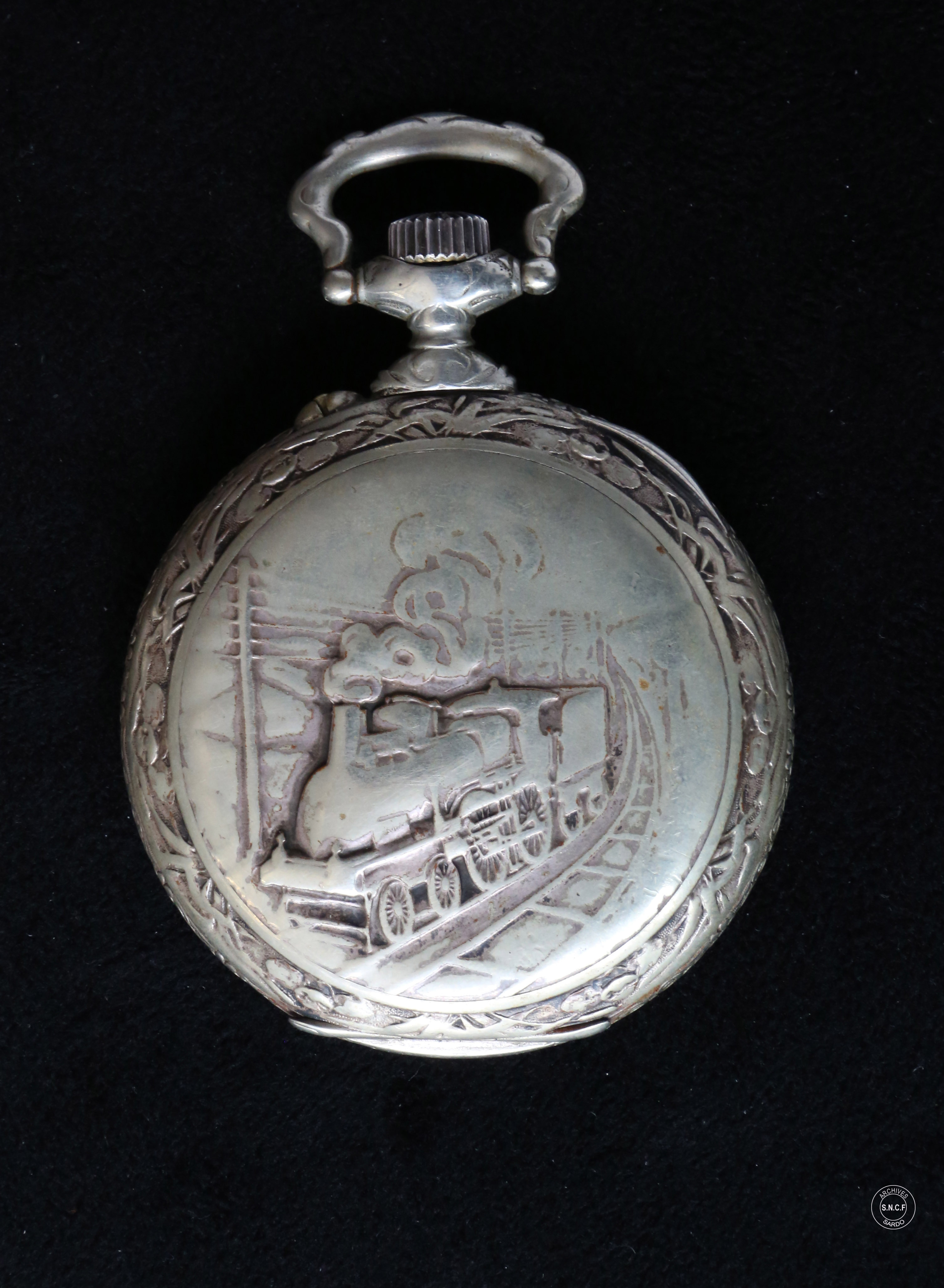
Montre_Régulateur_1_3
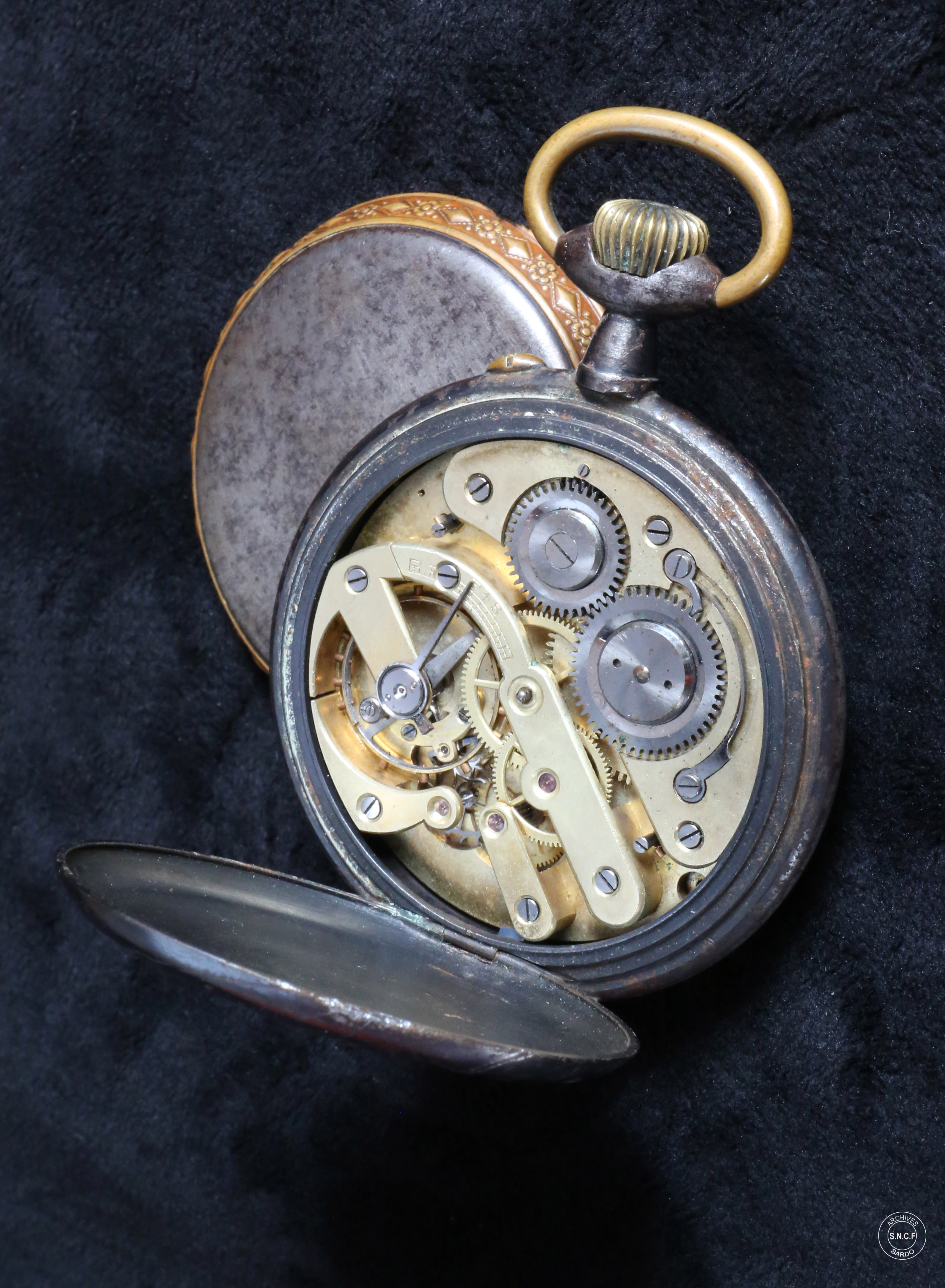
Montre_Régulateur_2_3
In French stations, time adjustments were made on a regular, daily basis. Each railway employee was responsible for keeping his or her pocket watch in good working order. Here are a few regulator watches from our collection.
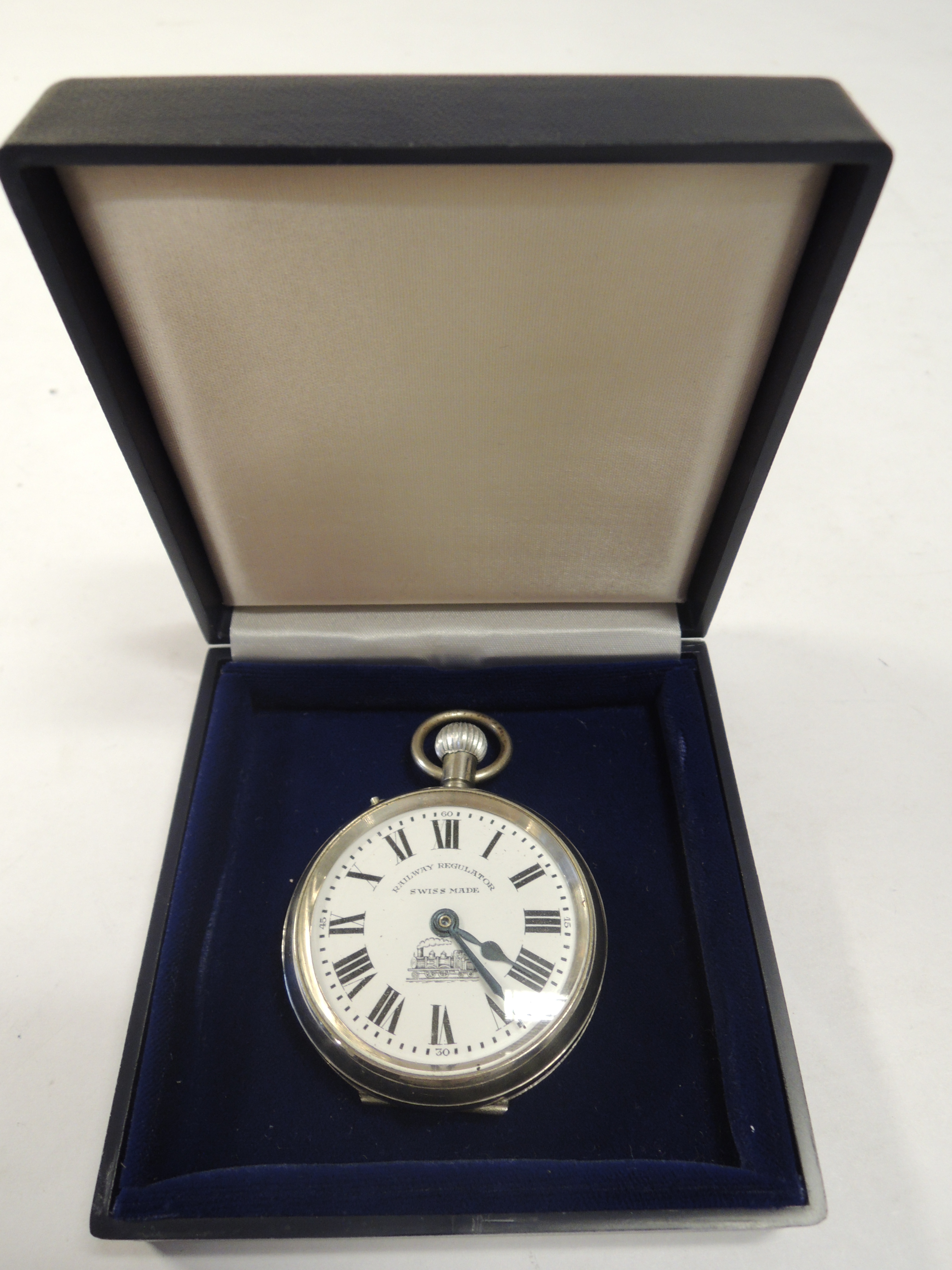
Let’s talk about these features. The regulator watch is flat, so it fits into a small pocket and is easy to carry. Arabic numbering is preferred, as Roman numerals are less legible. The time must be easy to read at a glance. In Europe, bezels are wide and clean, to make reading the time easier. Usually made of silver or silver-plated steel, regulator watches are engraved on the back of the cover. Above, an ordinary regulator with open dial and manual winding. The dial, made in Switzerland, features a train engraving on the background.
Did you know? The regulator watch, and the measurement of time it implies, also enabled the development of a special industry: the publication of timetable booklets and tourist guides by printer Napoléon Chaix in 1845. The latter founded theImprimerie centrale des chemins de fer who, the following year, released the first Train timetable booklet. This booklet is called “l’indicateur Chaix”, then, by simplification, “le Chaix” and “le Chaix”. allows passengers to find out train schedules. In 1880, a major branch of Imprimerie centrale des chemins de fer was set up at 126, rue des Rosiers, in Saint-Ouen. In 1881 it became Imprimerie Chaix. In addition to posters by artistic director Jules Chéret and friends such as Lucien Lefèvre, Alfred Choubrac and Georges Meunier, the company also prints typesetting, letterpress printing, binding, straightening and more. The family business continued to grow, and soon became one of the most powerful printing houses in Europe. Best known for publishing railroad indicators until 1976, Chaix also prints advertising flyers, posters, periodicals, books and the monthly Les Maîtres de l’affiche series.
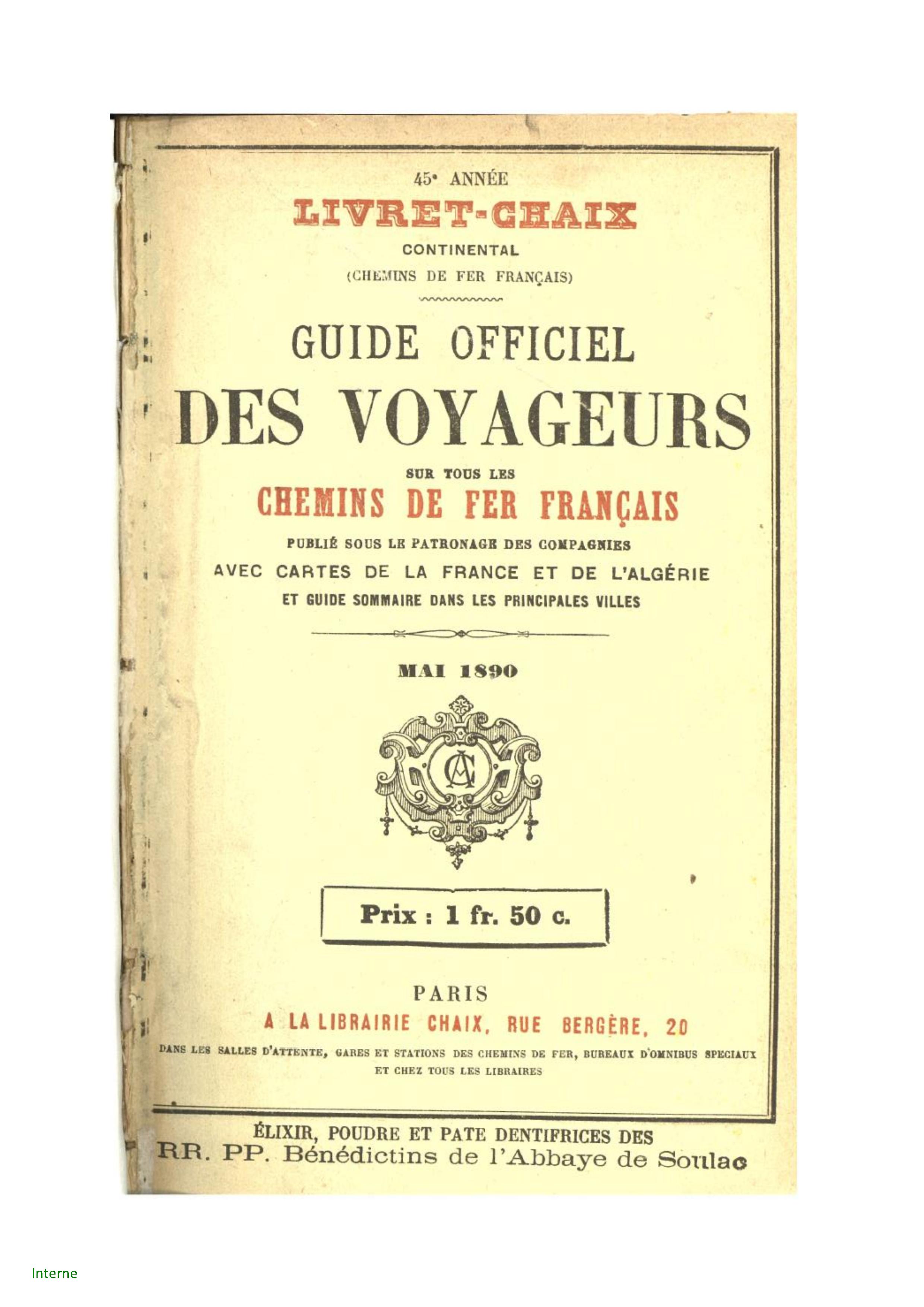
In the 19th century, it became necessary to unify time throughout France. The railroads were booming, and it was no longer possible to set train timetables according to the local time in each town. To guarantee the regularity and safety of rail service, the companies decided to use Paris time as the original time, while retaining the display of local time. The result was confusion for passengers. The companies then took the initiative of making the trains leave five minutes later than Paris time. On the quayside, clocks display “Rouen” time, a few minutes behind official time. Station managers set the actual departure of trains at this time. In the second half of the 19th century, all French towns adopted the double time display, i.e. Paris time. Visit law of March 14, 1894 put an end to this duplication by setting legal time in mainland France and Algeria to the mean time of Paris. This harmonization is one of the hallmarks of theadapting France to the current industrial and economic revolution.
Finally, with the law of March 9, 1911, France adopted Greenwich meridian time, abbreviated GMT in English, as well as the division of the day into 24 hours instead of twice 12 hours. These practices were recommended in October 1884 at the International Conference in Washington.
Fin du XVIIe siècle
Appearance of the regulator as a clockwork mechanism
1846
Printing of the first train timetable booklet. This booklet is called “l’indicateur Chaix”, then, by simplification, “le Chaix”.
1880
A major branch of Imprimerie centrale des chemins de fer, founded in 1845 and renamed Imprimerie Chaix in 1881, is located at 126, rue des Rosiers, in Saint-Ouen.
14 mars 1891
Time standardization throughout France, setting legal time in metropolitan France and Algeria on that of Paris.
9 mars 1911
France adopts Greenwich meridian time, abbreviated GMT, and divides the day into 24 hours instead of twice 12.
Baillaud, Lucien. Railroads and legal time. Revue d’Histoire des Chemins de Fer, n° 35, autumn 2006, p. 25-40.
Historail, Les Chaix. A dynasty of fellow travelers. By G.Ribeill, July 10, 2019.
Alban Chaix, Historique de l’imprimerie et de la librairie centrales des chemins de fer: organisation industrielle et économique de cet établissement, 1878